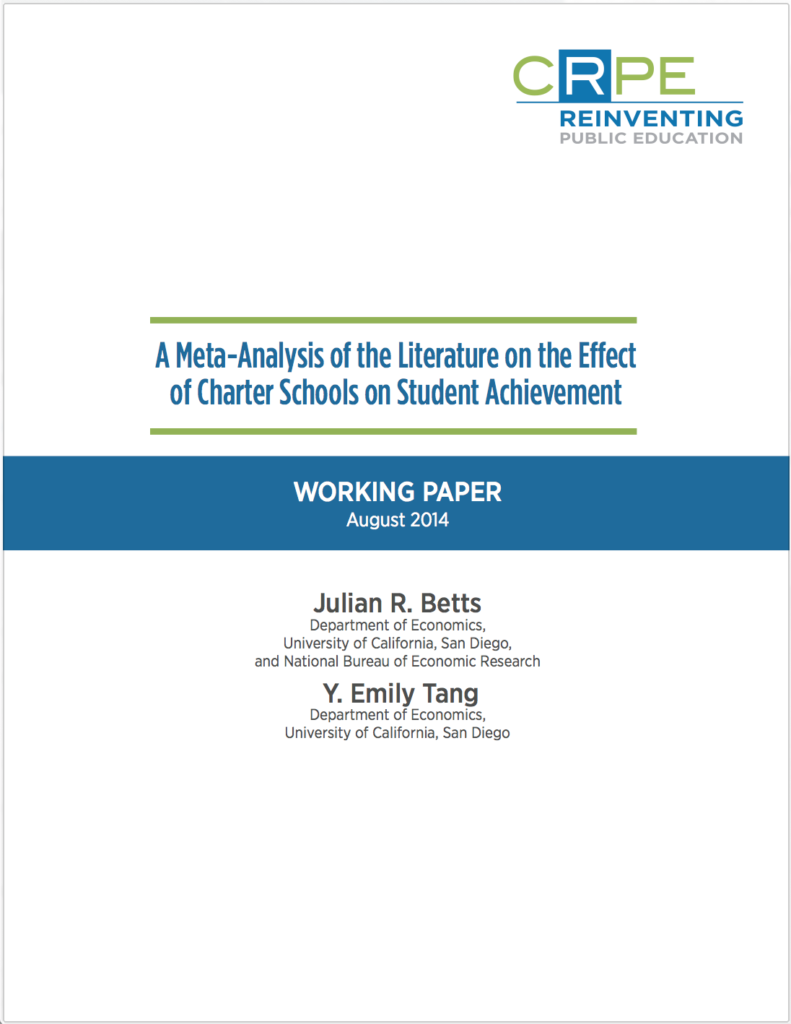Read the Authors’ Reply to an NEPC Review
Are charter schools working? That is, are students in charter schools learning as much or more than their counterparts in district-run public schools? While public and political debates rage about the charter sector’s efficacy, it is crucial to systematically consider the most rigorous studies to understand how in fact charter schools are serving students across the nation.
Since 2008, CRPE has commissioned Julian R. Betts and Y. Emily Tang, both economists at the University of California, San Diego, to conduct periodic reviews of the research on charter school achievement. This working paper presents their latest analysis of the available evidence on charter schools and student achievement, focusing on lottery-based and value-added studies.
The authors find that, for the set of charter schools, locations, and years that have been studied to date:
- Charter schools on average produce results that are at least on par with and, in many cases, better than district-run public schools
- Charter schools are producing higher achievement gains in math relative to their district-run counterparts in most grade levels, particularly in middle school, and gains in reading that are similar to district-run schools in reading
- Charter school effect size has risen for both math and reading over time, though this trend is not statistically significant
- A small and growing body of literature on the relationship between charter school attendance and outcomes apart from achievement finds further evidence of large positive impacts of charter schools on high school graduation, college enrollment, and behavioral issues
The findings outlined in this working paper highlight the opportunities inherent in identifying which charter schools outperform and underperform their district-run counterparts and in understanding the conditions under which charter schools thrive or fall short in terms of improving outcomes for their students.




